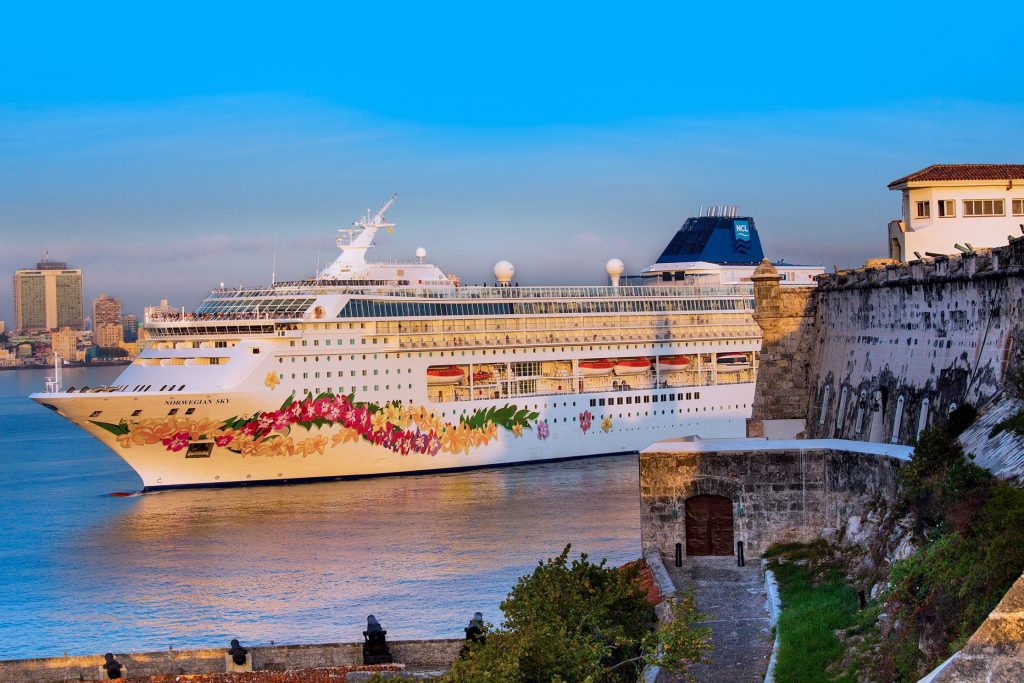Skift Take
Expanding to new markets can be tough; Norwegian Cruise Line Holdings is fortunate that its business in the rest of the world appears to be thriving.
Last year’s cruise slump in Europe has given way to strong demand in the region from passengers around the world, and new Cuba itineraries are commanding high prices, executives from Norwegian Cruise Line Holdings said.
President and CEO Frank Del Rio said the Miami-based cruise operator just wrapped up “the best wave season” — the heavy booking period that kicks off the year — “that we and likely the industry have experienced in quite some time.”
The only market giving the company pause happens to be the one it’s about to enter: China. During the earnings call, Del Rio used the words “cautious” and, repeatedly, “conservative” to describe expectations for the market.
His comments came during Norwegian’s first quarter earnings call Wednesday morning.
The parent company, which operates the Norwegian Cruise Line, Regent Seven Seas Cruises, and Oceania Cruises brands, saw revenues jump to $1.15 billion, a 6.8 percent increase from the same time last year. But profits fell from $73.2 million last year to about $62 million in 2017.
Costs during the quarter for everything from operations to marketing, administration, fuel, maintenance, and repairs increased across the board. Still, based on bookings for the rest of the year, the operator increased its outlook for 2017, and said 2018 is starting to shape up well.
Chief financial officer Wendy Beck said the company is increasing its marketing spending this quarter to maintain “extremely high premiums” for Cuba sailings and to boost demand in China.
Cruises are typically booked in China through travel agents, who charter entire ships or parts of a ship in advance. Norwegian was pleased with the pace of new charter contracts through early March, Del Rio said.
But then tensions erupted between China and South Korea over deployment of a U.S. anti-missile system in Seoul, and cruise operators had to stop calling on Korean ports with ships departing China.
Even though Norwegian’s dedicated ship, Norwegian Joy, does not start sailing from China until late June, Del Rio said the restrictions on South Korean itineraries caused a slowdown in the signing of new charter contracts. Other cruise lines that have been in the market for far longer have also reported a drop in business.
Norwegian has seen a slight pickup in the past two weeks, but Del Rio said he would like to see the pace of new groups and charters accelerate.
“At least it broke the ice,” he said. “For a good six weeks, there was nothing. And now there is something. That gives us hope that there will be more.”
Despite the slowdown, Del Rio said the Joy is better booked for the second half of the year than the rest of the line’s ships. And pricing on the contracts that have been signed are in line with the company’s expectation that the ship will command a 20 percent premium compared to the rest of the fleet.
Asked if Norwegian was committed to keeping the ship in China year-round, Del Rio said yes — at least for now.
“Ships have propellers and rudders for a reason,” he said. “Our goal is to always deploy them in areas that we think can maximize profitability. Today, we think that place is China. The South Korea situation, we believe, is a temporary bump in the road and time will tell.”
The Daily Newsletter
Our daily coverage of the global travel industry. Written by editors and analysts from across Skift’s brands.
Have a confidential tip for Skift? Get in touch
Tags: china, cruising, earnings, norwegian cruise line
Photo credit: Norwegian Sky is shown in Havana on its inaugural voyage to Cuba. Demand for Cuba has been strong, but tensions between China and South Korea have resulted in a slowdown for the company's new business in China. Norwegian Cruise Line
